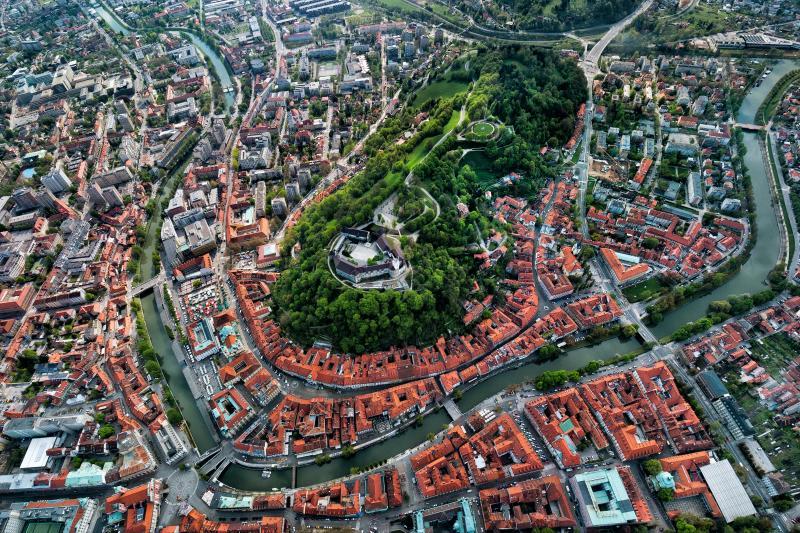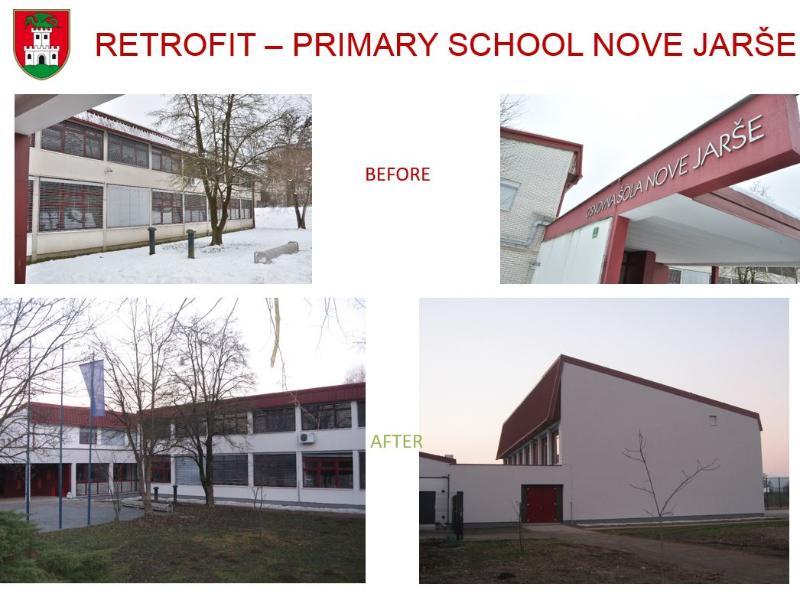Ljubljana’s public buildings were cold, leaky and expensive to heat. The ELENA programme financed a Slovenia energy efficiency makeover.
Imagine trying to improve the heating in a large stone Medieval castle on a hill that has dozens of expansive rooms, corridors and towers. You can’t just replace a few windows.
Several years ago, Ljubljana created an energy plan to make the city more sustainable and efficient. The Slovenian capital wanted to renovate its landmark castle, insulate public buildings and modernize schools, libraries and theatres. The plan would cut waste and heating bills and improve air quality.
“There was a big need for improvements in the city,” says Alenka Loose, the energy manager for Ljubljana.

Ljubljana has one of the costliest heating distribution infrastructures in Europe
A wintry landscape
Heating is important in Ljubljana, because average temperatures rarely climb above freezing for several months in the winter. Even in the summer, the heat sometimes is turned on at night.
Because of cold weather and inefficient buildings, Ljubljana, with a population of about 280,000, has one of the costliest heating infrastructures in Europe.
The European Investment Bank started working with Ljubljana on energy renovation in 2013. Here is how the Bank helped by using a new energy assistance program:
- A EUR 975,000 grant was approved to help the city plan energy renovations
- The assistance showed Ljubljana how to prepare a budget to invest EUR 50 million carrying out energy efficiency upgrades
- Renovation was scheduled for more than 70 public buildings
- The project called for new insulation, better windows, modern heaters, efficient street lighting
Lack of know-how
The grant was made by ELENA, or European Local Energy Assistance, a programme run by the Bank and financed by the European Commission. ELENA gives money for preparing energy efficiency, renewable energy and urban transport investments. The programme helps cities cover costs related to the market studies, business plans, audits and contracts needed to complete energy projects.
“When it comes to energy efficiency in many cities, the problem is not so much finding the financing as the lack of know-how or capacity to plan and carry out large-scale projects,” says Reinhard Six, a senior energy engineer at the EIB. “Our engineers and economists encourage local authorities to think ambitiously and be positive about saving energy.”

A primary school in Ljubljana before and after it was renovated.
The ELENA program started in 2009. It has awarded around EUR 100 million for energy projects. As a result, cities and other public and private entities around Europe have invested nearly EUR 4 billion in energy renovations.
"We were not prepared"
In Ljubljana, an energy-consumption survey of about 300 sites found that renovating buildings could cut up to 40% in energy use and save about EUR 3.5 million a year in heating costs.
To get ready for the renovations, the city hired more staff and brought in consultants. The ELENA grant helped pay for this, including preparing contracts and soliciting bids for projects. The grant also helped compare the savings that would come from using various renewable energy technologies. The project created more than 400 jobs. It was the biggest Slovenia energy efficiency renovation to date.
“We had used energy poorly and we faced problems that were going to be very time-consuming,” Loose says. “We were not prepared to take on a project of this size.”
Forty-nine buildings have been renovated so far. Kindergartens, primary schools, public libraries, health centres and sports halls received better insulation and heating units. Cultural monuments like the Plesni dance theatre or the castle received new heating, ventilation and air-conditioning systems, as well as new electrical wiring. The city installed thermal heating units that use less energy. Electricity for city buildings now comes from renewable energy sources.
Rewards for people and environment
“The occupants of buildings are already noticing the savings,” Loose says. “This is better for the environment and more comfortable for people working in these places.”
The Slovenian government released guidelines to make it easier for others to copy the renovations. After all, ELENA grants are selected based on the potential for the project to be replicated in other places. The Slovenia energy efficiency programme could be a model for other European cities.
In the end, maybe retrofitting a Medieval castle isn’t the toughest part of the job. The EIB’s Six agrees: “The hardest part sometimes is just getting started.”
